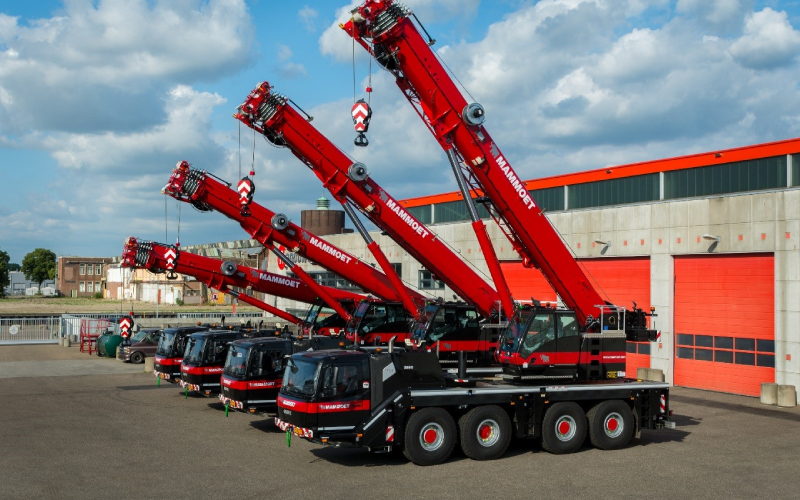Best Practices for Routine Maintenance of Rental Equipment
When heavy machines are part of the equation, everything comes down to one thing: reliability. A late start due to a malfunctioning loader or an unexpected breakdown halfway through a lift job doesn’t just slow down a site, it can compromise the entire timeline. In the fast-moving construction world, especially here in the UAE where large-scale projects are always under pressure, maintenance isn’t just a recommendation, it’s a responsibility.
The truth is that rental equipment gets pushed harder than most machines. Different users, different environments, and unpredictable wear patterns all make it more susceptible to problems. But with the right systems in place, these machines can be just as dependable as owned fleets and sometimes more so.
1. First Things First: Routine Checks Matter
Most seasoned mechanics will tell you the same thing: what you inspect regularly rarely surprises you. A walkaround checklist isn’t just procedural—it’s preventative. Simple checks like inspecting tire pressure, oil levels, filter cleanliness, or listening for unusual noises can alert technicians early before a small issue becomes a costly failure.
In the UAE’s dusty conditions, something as minor as a partially clogged air filter can reduce performance drastically. Adding pre-use inspections as a non-negotiable step saves more time than it takes.
2. Scheduled Maintenance Beats Emergency Repairs
This isn’t groundbreaking, but too many companies still operate reactively. They wait until something fails. That’s a mistake. Instead, tracking machine hours and sticking to service intervals as suggested by manufacturers is one of the most effective strategies to preserve both performance and lifespan.
A recent industry study noted that companies with proactive maintenance programs reduce downtime by nearly 25% compared to those who only perform reactive repairs. Multiply that across multiple job sites, and the difference is huge—not just financially, but logistically too.
3. Keep Logs, and Then Actually Use Them
Logging maintenance activities isn’t paperwork for the sake of it. It builds a profile of each unit—what’s been done, what’s coming up, and what’s worn out faster than it should. This is where even basic spreadsheets, or mobile apps can make a big difference.
A machine’s history can reveal recurring faults. Let’s say a generator consistently shows overheating issues after 300 operating hours, knowing this helps anticipate and prevent future rental delays.
Plus, clients feel more confident when they know the equipment they’re using has a documented service record. It builds trust and that’s hard to quantify but easy to lose.
4. Train Operators, Even the Temporary Ones
One of the most overlooked aspects of rental care is who’s operating the equipment. Even the best-maintained machine won’t survive abuse or misuse. That’s why rental companies should spend a few minutes walking users through proper operating procedures—especially if the operator seems unfamiliar with the model.
This doesn’t mean full-scale certification. Even basic instruction on warm-up times, load limits, and shutdown procedures can prevent breakdowns. A short guide included in the cab or sent via WhatsApp? That works too. Keep it practical.
5. Telematics Can Do More Than Track Location
Many modern machines, especially in the rental sector, now come equipped with GPS and sensor systems. Telematics isn’t just for fleet tracking—it’s a goldmine for maintenance.
You can:
- Monitor operating hours
- Detect overuse or prolonged idling
- Receive alerts for fault codes in real-time
In the UAE, where remote work sites and desert environments make manual checks challenging, remote diagnostics help cut inspection times and allow better response planning. It’s efficient, and clients appreciate that level of foresight.
6. Environmental Factors: Dust, Heat, and More Dust
Operating machinery in the Gulf is different from temperate climates. Dust storms, high humidity, and temperatures that can soar above 45°C all take a toll. Filters clog faster, coolant systems work harder, and metal expands more quickly.
Your maintenance program should account for this:
- Shorter intervals between air filter replacements
- More frequent coolant system flushes
- Periodic testing of hydraulic seals
Ignoring environmental conditions is a shortcut to breakdowns—and they often show up at the worst times.
7. Spare Parts: Stock Smart, Not Excessively
It’s a balancing act. Stock too few parts, and you’re waiting on deliveries when time matters most. Stock too many, and you risk holding onto inventory that gets outdated.
What works best? A core inventory of wear parts—filters, belts, seals, fluids—and solid relationships with local suppliers who can deliver on short notice. Some UAE-based providers even offer same-day part delivery for common models. Use that to your advantage.
8. A Culture of Care Is Contagious
No checklist, no app, no manual can replace the right company culture. When team members, from mechanics to field reps, take pride in sending out clean, safe, reliable machines, clients notice.
This doesn’t happen overnight. But it starts with setting expectations. Reward teams that keep machines in great shape. Celebrate “zero fault” returns. Over time, this attention to care becomes a norm, not an exception.
Final Thoughts
Good maintenance isn’t flashy. It doesn’t show up on Instagram or turn heads at expos. But behind every project that finishes on time and under budget is a lineup of machines that just worked day after day, shift after shift.
Whether you’re renting out one unit or a fleet of 300, smart upkeep is what keeps clients coming back. It ensures fewer disruptions, longer machine life, and a reputation built not on claims, but on consistency.
If you’re currently working with a heavy equipment rental company in the UAE, or planning to, always ask how they handle routine service. Because that answer will tell you everything you need to know about what to expect when the pressures on.
One provider known for this kind of care-first approach is Safest Lift Equipment Rentals.



